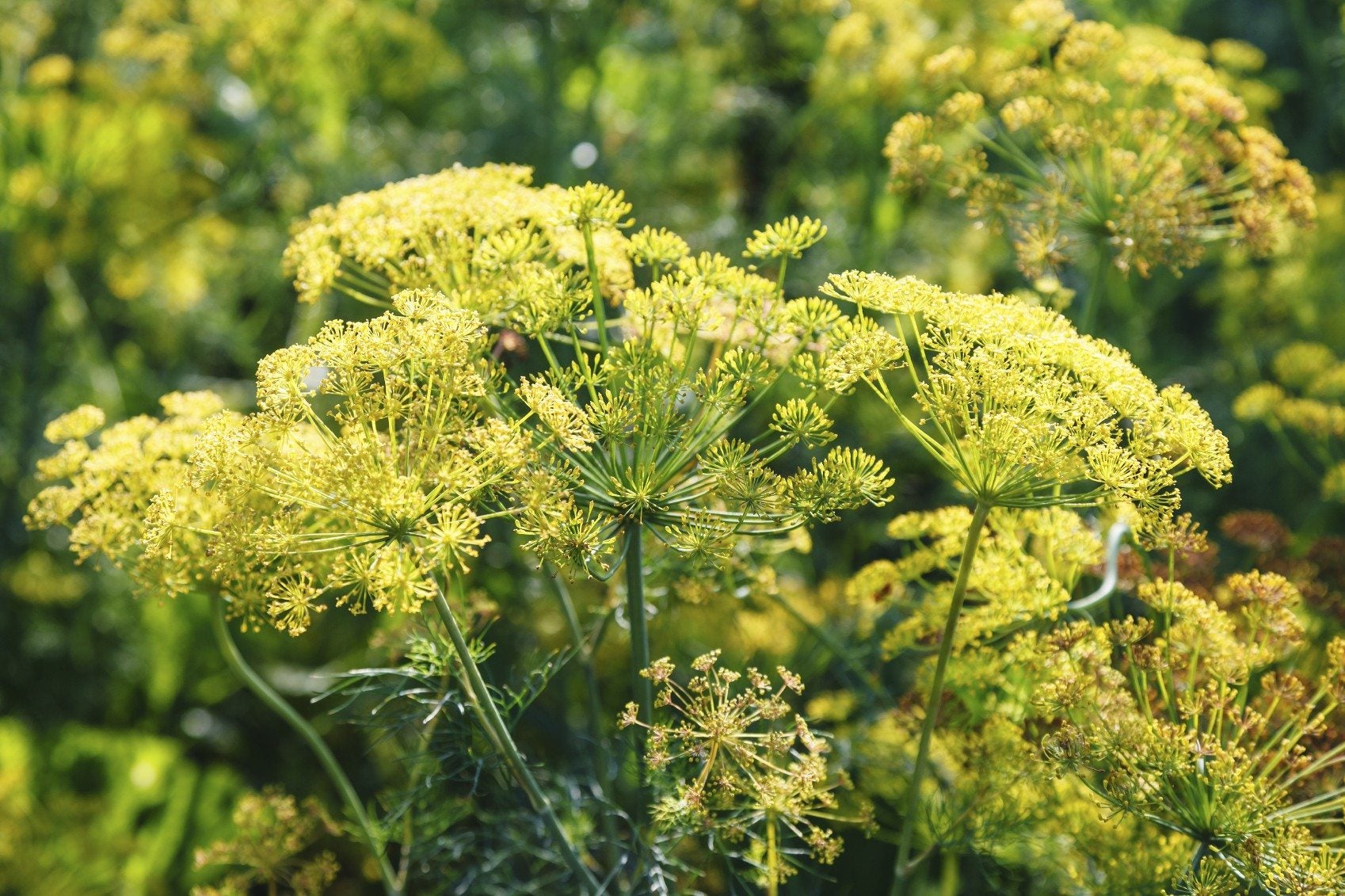Why Is My Dill Flowering: Reasons A Dill Plant Has Flowers


Dill is a biennial that is most commonly grown as an annual. Its leaves and seeds are culinary flavorings but flowering will impede leaves while providing the zesty seeds. You need to decide which part you desire the most in order to promote a bigger harvest of that dill growth. When a dill plant has flowers, foliage decreases and the plant focuses its energy on forming a bigger seed head. Flowering in dill plants can be prevented if you wish to preserve the dainty foliage for seasoning.
Help, My Dill Plant is Flowering!
So you say, "My dill plant is flowering." This may be a good thing or a bad thing depending upon which part of the plant you use most often. Hot weather will enhance bud formation and cause the plant to bolt, or flower. The flower signals the end of the plant's life and the cessation of foliage production. It really depends which part you use the most when flowering in dill plants initiates. If you are concerned about your dill forming a flower head, it means you probably use the lacy leaves most often for seasoning. You will notice as the head forms that the stem thickens and foliage becomes smaller and more sparse. This is because the plant is focusing on producing flowers, seeds and the reproductive cycle. Why is my dill flowering? Plants that grow in hot regions will see this occurring early in the season, while plants in cooler regions will not flower until later in summer. The good news about flowers is that they lead to seed and, therefore, more future plants. Dill grows fast and you might be able to get another crop if you plant more seeds.
What to do if a Dill Plant Has Flowers
Bolting is a natural plant response when environmental conditions become less than optimum. The plant's impulse is to produce seeds and preserve its genetics. In order to prevent the flower head for a time and encourage more leaves, you must literally nip it in the bud. This means pinching when you first see the beginnings of the small buds. Pinching can enforce a larger, bushier, more compact plant and prevent it from starting to die back. Of course, eventually the plant will die and probably flower but you can extend the leaf harvest somewhat. If your dill plant has flowers already, pinching will likely not help, as the plant has already made the decision to leave this cruel world and leave behind its genetic memento. The flowers will develop into pungent seeds, commonly used in canning and pickling. To harvest the seeds, let the flower turn brown and the seeds turn from green to tan. Snip off the head and hang it upside down in a dry, warm location to finish maturing. When the seeds are ready, place the entire flower head in a paper bag. Shake the head vigorously into the bag, collecting the tiny oval seeds. Store the leaves in a tightly sealed glass jar in a cool, dry, dark location – such as your spice cupboard. Dill is best fresh and will gradually lose its flavor over time. It is a good idea to replace your dill seasoning annually to preserve that intense flavor. Fortunately, growing dill is quick and simple and the seeds you collect can be used to start the next season's crop.
Sign up for the Gardening Know How newsletter today and receive a free copy of our e-book "How to Grow Delicious Tomatoes".

Bonnie Grant is a professional landscaper with a Certification in Urban Gardening. She has been gardening and writing for 15 years. A former professional chef, she has a passion for edible landscaping.